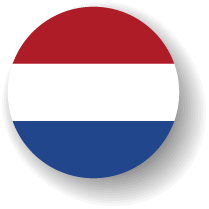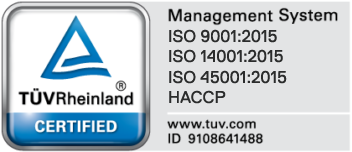
Several European countries have implemented a flavor ban on e-cigarettes as part of their efforts to reduce youth vaping and nicotine addiction. So far, nine nations have enforced such regulations, targeting flavors like fruit, candy, and mint, which are seen as particularly appealing to young users. While supporters argue that these measures protect public health, critics warn they could drive adult vapers toward less regulated alternatives or even back to traditional smoking.
In this article, you will learn which countries have implemented flavor bans, what specific regulations they have introduced, and how these measures impact the vaping industry.
European Countries with Flavor Ban on Vapes
To combat youth vaping, several European countries have introduced flavor ban on e-cigarettes. These regulations aim to limit the appeal of vaping among minors while ensuring public health. Below is a list of countries that have implemented or proposed such bans.
Flavor vape ban in Finland
The first country in Europe to implement a ban, prohibiting all e-liquid flavors except tobacco since August 2016. Read more about vaping in Finland here.
Ban on flavored vapes in Estonia
Flavored e-liquids have been restricted since 2020, allowing only tobacco and menthol flavors. Read more about regulations in Estonia here.
Denmark flavored vape restriction
A ban on flavored e-liquids took effect in 2022, permitting only tobacco and menthol flavors. Read more here.
Flavor e-liquid ban in Lithuania
Since 2022, only tobacco-flavored e-liquids have been allowed. Check more information here.
Restriction on flavored e-cigarettes in Hungary
All flavored e-liquids, except those mimicking tobacco, were banned, likely starting in 2023. Read more here.
Flavor vape ban in The Netherlads
As of January 2023, flavors such as strawberry ice cream, mango, hazelnut paste, and mojito have been banned. By January 2024, only tobacco-flavored e-liquids will remain legal. Click here for more.
Ukraine flavored vape restriction
From July 2023, all e-liquid flavors except tobacco have been prohibited. Read more information here.
Ban on flavored vapes in Slovenia
A ban on flavored e-liquids took effect in 2024, allowing only tobacco flavor. Click here for more information.
Restriction on flavored e-cigarettes Latvia
Starting in January 2025, only tobacco-flavored e-liquids will be permitted. Read more information here.
Find out more about vaping in other countries:
Negative Consequences of a Flavor Ban
Implementing a flavor ban on nicotine products may seem like a step toward reducing youth access to vaping, but it could have several unintended and far-reaching negative consequences. Here’s an overview of the potential impacts:
Decrease in Smoking Cessation Rates
Many adult smokers use flavored vaping products as a tool to transition away from traditional cigarettes. By removing flavors, a ban may discourage these smokers from quitting or even push them back to combustible tobacco. Research suggests that vaping restrictions reduce the likelihood of smokers making the switch, ultimately undermining smoking cessation efforts and increasing tobacco-related health risks.
Growth of the Black Market
A ban on flavored nicotine products may drive consumers to seek unregulated alternatives. The black market is difficult to monitor, and illicit products often contain harmful or unknown substances, posing significant health risks. Additionally, smuggling and illegal sales could become more widespread, making it harder for authorities to enforce vaping regulations and ensure consumer safety.
Economic Consequences
The vaping industry generates significant tax revenue, much of which funds public health initiatives and government programs. A ban on flavored products would lead to a decline in legal sales, reducing tax income and potentially causing budget deficits. States that rely on tobacco and vaping tax revenue may be forced to cut funding for essential services, including anti-smoking campaigns and addiction treatment programs.
Contradiction in Public Health Policy
Public health strategies have long promoted vaping as a less harmful alternative to smoking. However, a flavor ban contradicts these harm reduction efforts by limiting access to a popular smoking cessation tool. This inconsistency may create confusion among consumers and reduce trust in public health policies. Some smokers who would have switched to vaping may instead continue smoking due to a lack of appealing alternatives.
Potential Increase in Traditional Cigarette Sales
If vaping becomes less attractive due to flavor restrictions, some users may revert to smoking traditional cigarettes. Studies indicate that strict vaping regulations are linked to increased cigarette consumption, as higher taxes and bans push consumers back toward combustible tobacco. A resurgence in cigarette sales would counteract years of progress in reducing smoking rates and its associated health risks.
Public Safety Risks from Unregulated Products
Banning flavored vaping products may encourage the rise of unregulated and counterfeit alternatives. Illicit vaping liquids may contain unknown or dangerous chemicals, increasing the risk of serious health issues such as lung disease. Past reports have linked black-market vaping products to severe respiratory illnesses, highlighting the dangers of an unregulated supply chain. Without oversight, consumers have no way to verify the safety of the products they use.
Vape flavor ban in Europe: summary
While the intention behind a flavor ban is to reduce youth vaping, the potential negative consequences cannot be ignored. From driving smokers back to cigarettes and fueling black market activity to reducing tax revenue and complicating public health efforts, the impacts of such a ban could be far-reaching. Policymakers must carefully weigh these risks to ensure that regulations balance youth protection with harm reduction and public safety.
What’s your take on flavored vape ban? Share your thoughts with us!
Let’s grow your business together!
Subscribe to our newsletter and receive a free access to our e-mail course on raw materials for e-liquids production (and more!).
No spam, only valuable content we promise to send you.
























